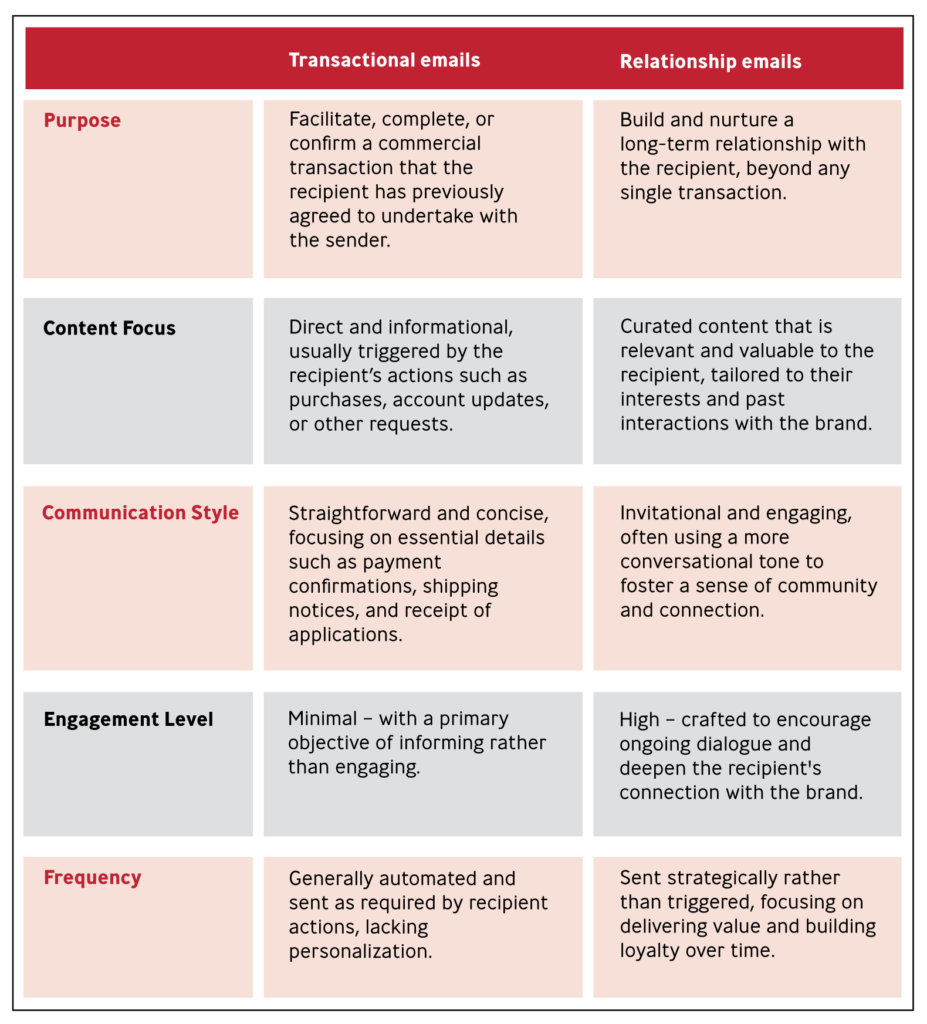It’s true that most people favor email as their preferred method of communication; it’s immediate and versatile. That said, this same flexibility often leads organizations, including associations like yours, to an over-reliance on transactional emails. Could your email strategy be overwhelming your audience rather than engaging them?
What We’ve Learned from Email Audits
Time and again, our audits reveal a common trend: most organizations, perhaps yours included, have a tendency to send out more transactional emails than those dedicated to building relationships—often at a ratio of 2:1. For instance, one client discovered that in a period of promoting events and membership campaigns, 71% of their emails were transactional, while only 29% focused on nurturing relationships.
This imbalance often results in communications that feel less humane and more directive—simply instructing subscribers to “buy” or “do” something rather than engaging them on a more personal level. We’ve got to start treating our audience like people, not just potential sales.
Comparing Transactional and Relationship Emails
Transactional emails have their place. They are essential for confirmations, reminders, and information about discounts. However, the problem arises when these types of emails dominate your communication strategy, reducing your members to mere transactions. This not only distances your audience but also increases the likelihood of your emails being disregarded or deleted with a simple thought: “Not today.”
Relationship-based emails prioritize building a meaningful connection with the recipient, whereas transactional emails focus on completing or confirming a specific action or transaction.

By strategically balancing these two types of emails, organizations can not only optimize their communication effectiveness but also foster stronger connections, enhance customer satisfaction, and potentially increase the lifetime value of their audience.
Transforming Your Email Strategy
How can you turn a standard transactional email into a relationship-building opportunity? Here are a few strategies:
Event Registration:
Instead of just pushing for registration, frame it as an invitation to an exclusive event where they can connect, learn, and grow. Share stories of past attendees who found significant value in participating.
Membership Renewal:
Replace a straightforward renewal reminder with a personalized appreciation message. Reflect on the tenure of their membership and highlight upcoming opportunities tailored for them.
Resource Promotion:
When promoting a benchmarking report, initiate a consultative conversation. Provide snippets of insights they could gain and discuss how these could address specific challenges they face.
Webinar Promotion:
Offer more than a simple discount—invite them to an exclusive learning experience designed to enhance their professional growth, adding a preview of the actionable knowledge they’ll gain.
Have You Evaluated Your Email Strategy Recently?
Too many transactional emails make people stop listening.
If you’re planning join and renew campaigns or simply aim to improve your communication, consider conducting an email audit. Compare your transactional vs. relationship emails and adjust accordingly to enhance recipient engagement and achieve better results.
Your Next Steps
Transactional emails serve a purpose, but remember, building lasting relationships will sustain your organization in the long run. Begin transforming your emails today to deepen connections and elevate your overall communication strategy.
For more insights into enhancing your communication impact, read our guide on optimizing email strategies here.
Transition your strategy from transactional to transformational with Rottman Creative’s expert insights and watch your member engagement soar!
Share this post in LinkedIn:
NOT ANOTHER SNOOZELETTER.
SIGN UP. BE INSPIRED.
Your Association’s Marketing Plan Isn’t Working as Well as You Think It Is

3 Components of Holistic Email Marketing



